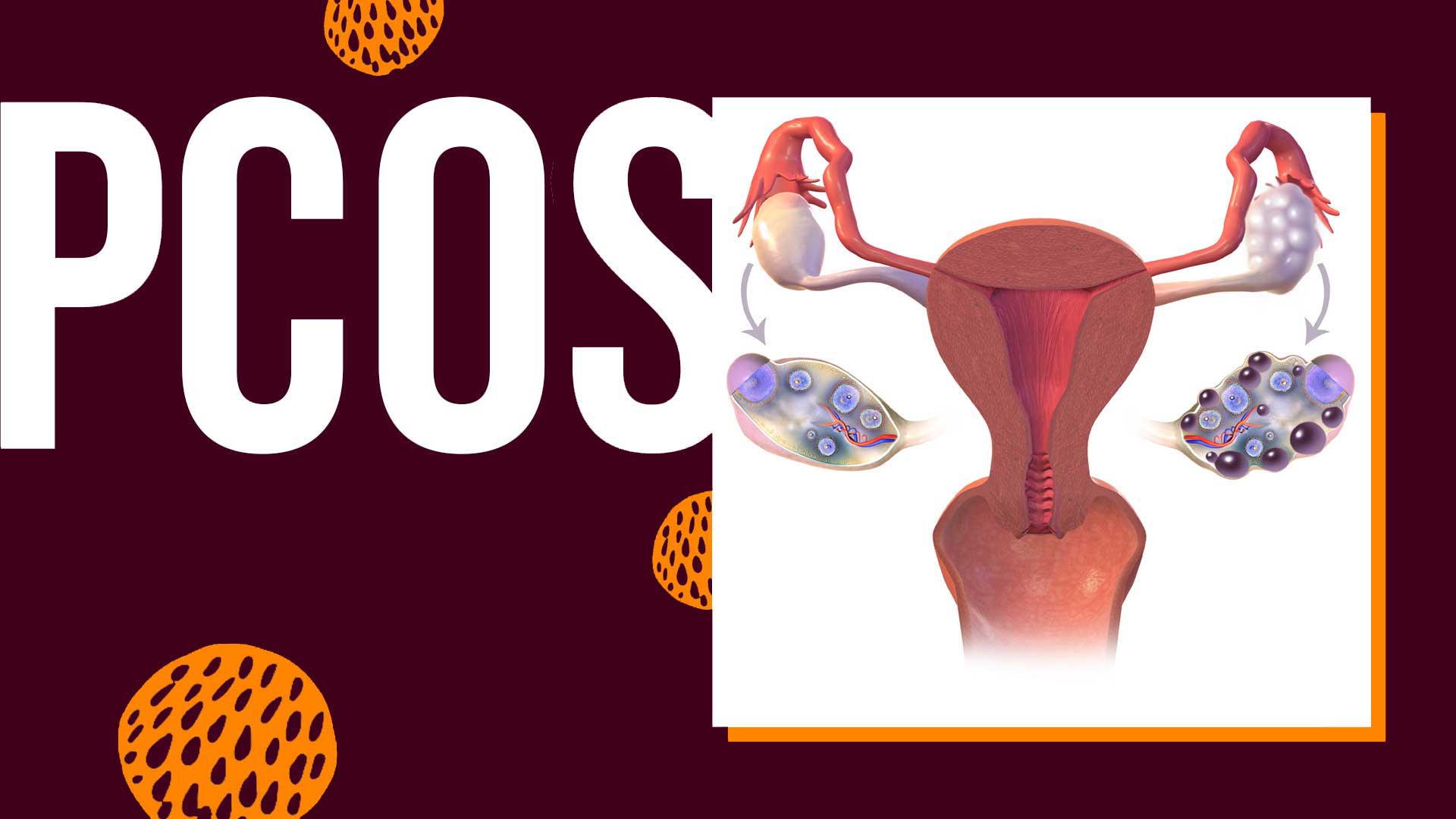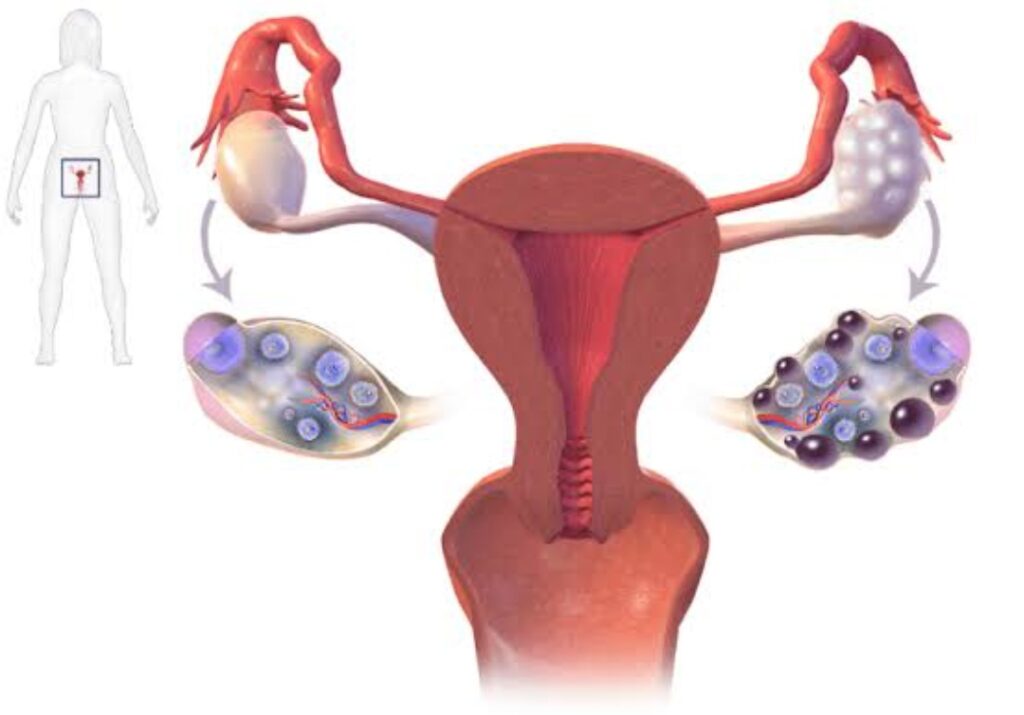What is PCOS?
The most common endocrine disorder, polycystic ovarian syndrome (PCOS), is more common among women of reproductive age, which is associated with other lifestyle diseases such as impaired glucose tolerance, type 2 diabetes, obesity and increased risk of cardiovascular diseases. It is a heterogeneous disorder that is difficult to define because there is no single abnormality or diagnostic test that explains the syndrome.
The exact analysis and pathogenesis of PCOS are still in research, while multiple theories has postulated, differing from genetic susceptibility to environmental exposure, both in utero and in the postnatal life.
Signs and Symptoms
The principal signs and symptoms of PCOS are :
- Irregular or absence of periods
- Acne
- Excess body hair
- Weight gain or difficulty losing weight
- Pain in Pelvic region
- Raised Luteinizing Hormone (LH) and decreased Follicle stimulating hormone (FSH)
- Infertility
Causes of PCOS
Following are few important causes of PCOS:
- Genetic tendency
- Strong stimulation in adrenals in childhood
- Raised insulin levels
- Contraceptive pills
- Hormonal imbalance
- Stress
The management of PCOS
The management and treatment of PCOS include a healthy diet. Besides regular physical activity, and medications. Also, PCOS management mainly aim at solving the four major components of PCOS including regularity of menstrual periods, control of hyperandrogenism (acne and hirsutism), management of infertility along with its associated risk factors such as type 2 diabetes mellitus, hyperlipidemia, and obesity. Both non-pharmacological and pharmacological management plan are important in the overall management of PCOS.
Moreover, In dietary management, it is important to take into review the calorie requirements of the individual. Also, Calorie requirements are higher for women with higher body mass and increase in correspondence to activity. It is frequently useful to clear the eating pattern and the macronutrient content of the diet, alternatively try to promote both healthy eating pattern and Values are based on BMI of 21.5 kg/m2 . Women with higher BMI have greater calorie requirement.
The body composition of patients who exercise regularly may change with increased lean body mass and decreased fat mass, but no comprehensive change in weight. Also, Increased lean body mass (muscle) increases resting energy expenditure and may help improve hormonal and metabolic parameters in women with PCOS.
Calorie requirements and restriction
However, Many studies in overweight and obese subjects have shown favorable effects of satisfactory (5%) weight loss on well-being, insulin sensitivity, and cardiovascular risk profile and reproductive function .
Energy deficiency can be achieved either by restricting nutrient intake or by increasing calorie expenditure. However, The best method is a combination of the two. A daily calorie score of 200 kcal/day will prevent weight gain and promote weight loss in the longer term. A debt of 500 kcal/day is needed for the average person to lose 0.5 kg/week, while a 1,000 kcal debt is needed for 1 kg weight loss/week.
Supplementation for PCOS
- Vitamin B12
- N-Acetylcysteine (NAC)
- Vitamin D
- Omega 3 fats
- Myo-Inositol (MYO) AND D-ChiroInositol (DCI)
- Berberine
- Magnesium
- Zinc
- Co Enzyme Q10
- Resveratrol
- Chromium
- Alpha-lipoic acid
- Melatonin
- DIM (Diindolylmethane) cruciferous vegetables including Brussels sprouts, kale, choy, cauliflower, broccoli
Eating pattern
Undoubtedly, The importance of frequency and balance eating patterns is often neglected, now a days a break from regular and social eating patterns to more irregular eating with increased consumption of benefit and energy-dense snack foods.
Exercise and PCOS
The frame of reference to exercise depends on the assessment of the patient’s current exercise habits, priority regarding type of exercise, and also, the tendency to accept exercise.
The following options for exercise for the patient with PCOS:
Aerobic exercise: This is important for cardiovascular fitness and to increase energy expenditure as part of a weight loss program and also to accept the overweight and some may have limited capacity for aerobic exercise.
This exercise don’t increase stamina and flexibility but increases calorie expenditure decrease risk of injury with exercise, and promote a sense of well-being.
Endurance exercise: Undoubtedly, This is the best way to gain fitness and to increase energy expenditure, for those who cannot manage high-intensity exercise, prolonged lower level activity. Also, Walking with a pedometer can be a very useful approach to increase energy expenditure.
Resistance training: The increase in muscle strength and muscle weight training has neglected for improving function and body composition. Moreover The high metabolic rate of muscle mass is an important determinant of resting energy expenditure and resistance training is now regarded as a highly acceptable way to influence weight, body composition, and insulin sensitivity.
Sources:
- Farshchi H, Rane A, Love A, Kennedy RL. Diet and nutrition in polycystic ovary syndrome (PCOS): pointers for nutritional management. J Obstet Gynaecol. 2007 Nov;27(8):762-73. doi: 10.1080/01443610701667338. PMID: 18097891.
- Goswami, P. K., Khale, A., & Ogale, S. (2012). Natural remedies for polycystic ovarian syndrome (PCOS): a review. International journal of pharmaceutical and phytopharmacological research, 1(6), 396-402.




